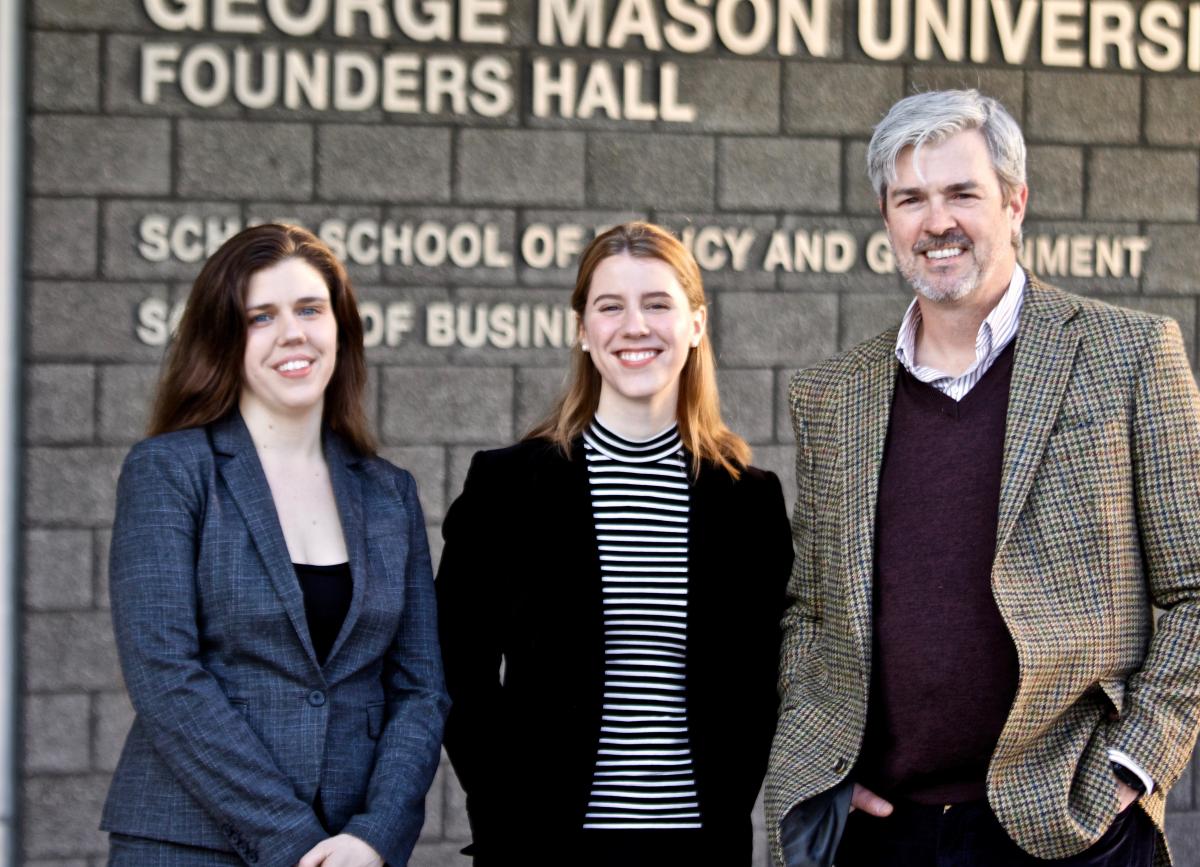Smithsonian Magazine’s editorial team was busy planning their January 2019 issue on America’s involvement in armed conflicts. They wanted to assess the current military and veteran communities’ opinions of hot-topic cultural, political and sexual issues—so they reached out to George Mason University for expertise in designing the poll and analyzing its results.
“We knew what questions we wanted to ask, but we didn’t know how to ask them,” said Smithsonian Magazine’s deputy editor Terry Monmaney. “Delton [Daigle] did.”
Daigle, a political science professor at Mason’s Schar School of Policy and Government and a survey research expert, had the resources to make a high-quality poll a reality. He and his team—which comprises political science PhD candidates Erica Seng-White and Jordan Cohen, and first-year political science master’s student Josephine Neulen—went through several iterations of the magazine’s draft questionnaire until it was ready for the field.

And even though the military community is inundated by surveys, this one caught their attention. More than 2,000 respondents out of 23,000 provided from the Stars and Stripes military newspaper’s mailing list completed the survey—a response percentage rate that is “uncommon” and “outrageously good” in the survey world, Daigle said.
“[Having that large of a sample size] allows you to make claims with greater certainty about how people actually feel,” he said.
Many of those claims fascinated the Mason team, who also pulled together a report of the results and analyzed the data for Smithsonian Magazine.
“One of the most interesting findings was the role that gender played in shaping the experiences and perceptions of military personnel,” said Seng-White. “One example of this is that nonmales in the survey were more likely to have witnessed sexual harassment.”
The number of women who reported being harassed or assaulted turned out to be much higher than previous surveys indicated, including a report from the Pentagon, Daigle said. In the survey the Mason team created, 65.8 percent of female service members said they experienced harassment or assault, compared to 6.1 percent of men.
The team also found generational differences in attitudes toward immigration and deportation, as well as toward women serving in combat roles, and transgender people in the military.
“When you break the data down by generational cohorts, the older cohorts are less receptive to [changing the status quo], and the young cohorts are more receptive to it,” Daigle said.
Even so, a high number of service members surveyed—about 87 percent—felt those serving in the military who are not U.S. citizens should be immune from deportation.
The survey revealed a lot of interesting findings, Daigle said, and it’s been used by media outlets across the United States and around the world from different sides of the political spectrum.
Seng-White said being able to put what she learned in her quantitative courses into practice was one of the most rewarding parts.
“For students, it’s a big resume builder, but it’s also fantastic real-world experience,” Daigle said. “By getting students involved completely through the survey process [from grant application development to final analysis], they’re less like workers and more like collaborators.”
“The learning is much more effective when they have that experience,” he said.
